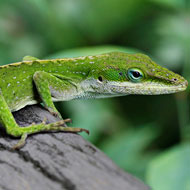
Insights on how animal evolution is affected by the geography of climate are revealed
Scientists have been given an insight into a 150-year-old evolutionary puzzle through a new approach to studying how animals change in size according to the temperature of their environment.
A new and potentially more revealing way of studying how animal evolution is affected by the geography of climate has been designed by researchers at the The University of Nottingham and Harvard University to shed light on Bergmann’s rule — the tendency for warm-blooded animal body size to increase in colder environments. Bergmann's rule has long been controversial with debate about whether it applies to cold-blooded animals and how it applies within or among species.
The research, published in the journal The American Naturalist, uses a new unified model to simultaneously investigate how animals across (inter-specific) and within (intra-specific) species change in size along temperature gradients. The researchers focused on two groups of Anolis lizard, one on Cuba and the other on nearby Hispaniola, the island occupied by Haiti and the Dominican Republic. They found that the size of lizards decreases with elevation on both islands, but their model revealed that different ecological and evolutionary processes are responsible on each island.
Dr Adam Algar, from the University of Nottingham's School of Geography, said; "Our new approach allows for the separation of intra- and inter-specific components of the relationships between animal traits and the environment. We found that the similar body size gradients in the lizards on both islands are constructed in very different ways. Even though lizards are smaller at high elevations on both islands, these body size patterns are underlain by very different processes. On Hispaniola, interspecific processes dominate, while on Cuba, intraspecific processes drive the pattern."
The results suggest that restricting analyses to either the intra-specific or inter-specific levels can miss important patterns and that both must be considered.
The researchers think the different geographies of Cuba and its neighbour Hispaniola may account for some of the varying patterns observed on each island. Hispaniola’s highland areas and their associated climatic gradients are far more extensive than on Cuba. Hispaniola has nearly 8,000 km² of habitat above 1,000m whereas Cuba has only 271 km² of highland habitat.
Image © Paul Hirst Wikimedia Commons CC-BY-SA-2.5



 The RCVS has announced a new version of its 1CPD mobile app, with enhanced features for veterinary surgeons and veterinary nurses to record their continuing professional development.
The RCVS has announced a new version of its 1CPD mobile app, with enhanced features for veterinary surgeons and veterinary nurses to record their continuing professional development.